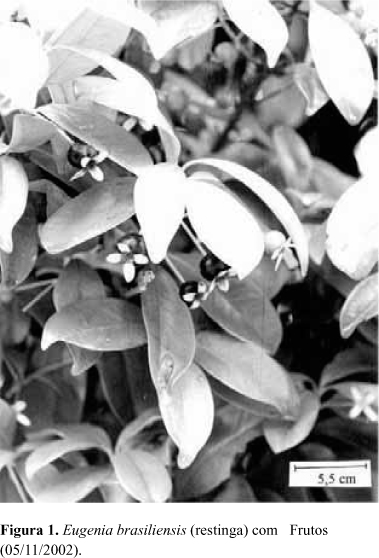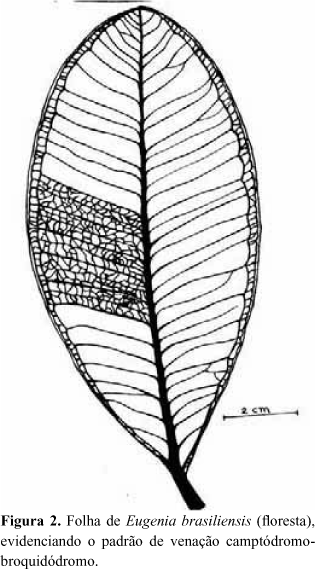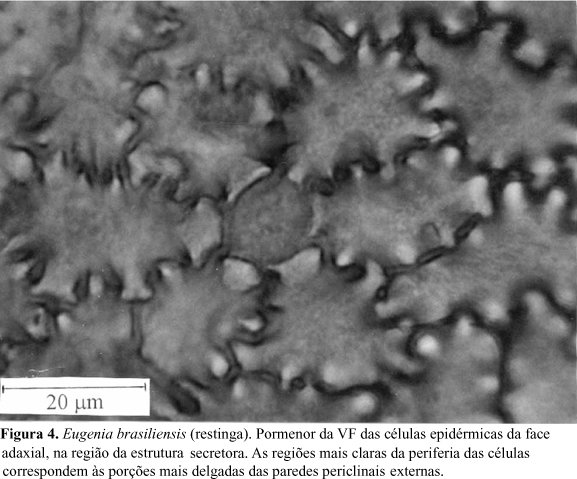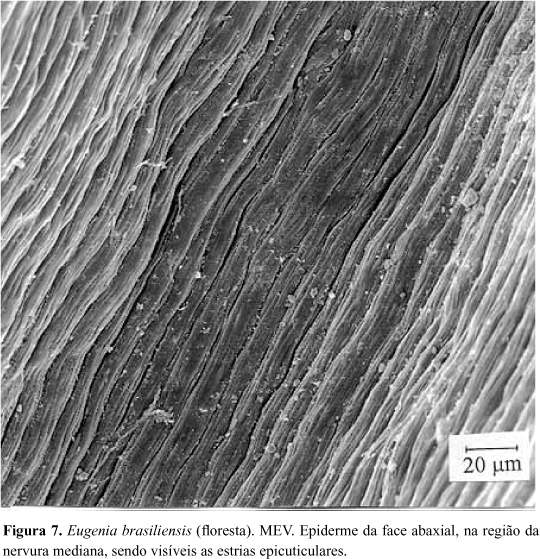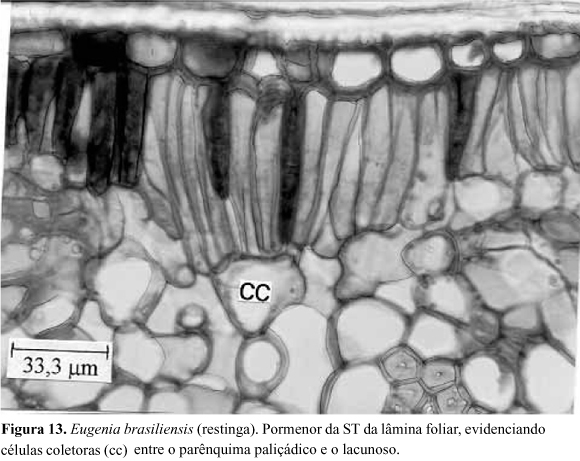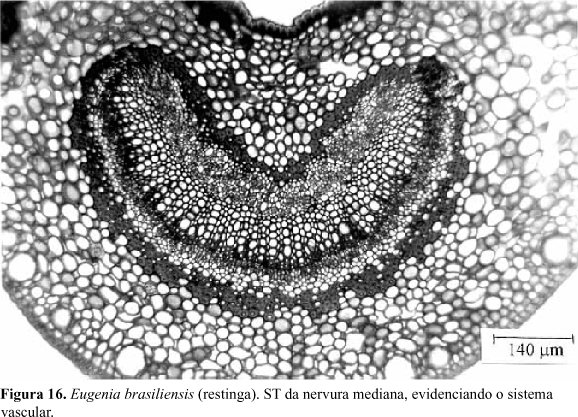The present paper presents the foliar anatomy of Eugenia brasiliensis Lam. The essential oils produced by this species present anti-reumathic, diuretic and anti-inflammatory properties and show activity against Tripanosoma cruzi. This study was carried out by comparison between leaves developed in restinga and forest areas, in order to register the main differences in the structure of this organ related to environmental conditions. Anatomically, the leaf of E. brasiliensis is hipostomatic, glabrous, with dorsiventral mesophyll, whit tendency towards the isobilateral type. Thickness of the cuticle and cutinized wall is noteworthy. In sub-epidermical position, there are many secretory cavities that produce essential oils, in both sides of the foliar blade. In the spongy parenchyma there are calcium oxalate druses crystals. E. brasiliensis leaves developed in restinga area present, in relation to that proceeding from forest, a larger amount of secretory structures, a higher ergastic substances concentration, thicker cuticle and foliar blade, more abundant stomata, a more compact mesophyll, sclerenchyma fibers and xilem elements with a deeper lignification and a greater development of the vascular system. The data obtained in this research suggest that the choice of the area where E. brasiliensis should be collected is important, because in restinga area it presents a greater production of essential oils and other substances associated with therapeutic effects.
Eugenia brasiliensis; Myrtaceae; medicinal plants; pharmacobotany; foliar anatomy

